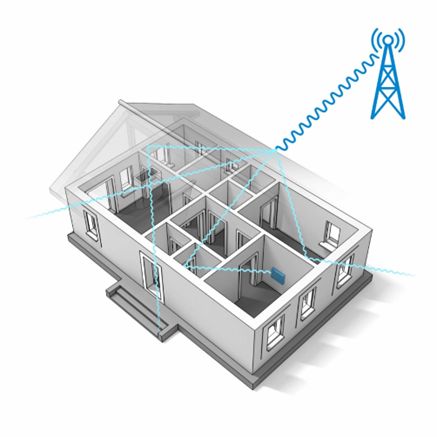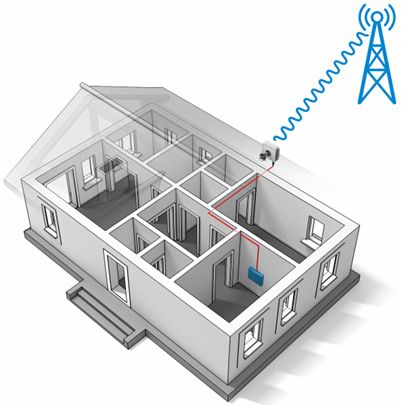Benefits of using an external antenna.
23.01.2024
Internet Problem
Nowadays, strong and reliable internet connection is a daily base need. People use more and more devices that require an internet connection. As a consequence the need for good-quality connection at home or in the office raises. There are many ways to enhance the received signal to take advantage of its maximum throughput like buying a new, more efficient router, changing Wireless Internet Serive Provider (WISP) or moving closer to the cellular base station. But is that all necessary or cost-effective? You don’t have to move out, nor change the provider. All you might need is an external antenna.
External antenna
An external antenna is simply an antenna you install outside of a router, even outside of the facility. An example of an external antenna could be a satellite dish used to receive signals from the satellite or just simple dipole external antennas for your router.
Connecting an external indoor antenna to the router can increase your performance compared to using the built-in antenna. The signal indoors is unreliable and very poor because the signal that comes from base station reflects all around the building before it is received by the antenna what results in a massive decrease in its strength. However, it can increase the radius of the area where the signal is being received and reduce the amount of dead or slow spots. It may help you receive signals that get into the building, and enhance it. The more impenetrable materials were used to build the facility, the worse network connection you might have.
To maximize the throughput, the most beneficial type of external antenna to use is an outdoor one. This helps users to avoid the problem that occurs when you install the antenna indoors, which is reflecting the signal from base station all over the facility. That happens by mounting the antenna on a rooftop or on the wall and connecting a router with an antenna with coaxial cable. Not only you are receiving stronger signal, but as the antenna has its gain, the connection is even more reliable and efficient, as the signal strengthens. If your office/home is located in the city center an omni directional antenna may be a good solution due to better access to cellular base stations. When you are situated outside the city (rural areas), directional antenna may be a better way out.
There is also a product of ours, which may be even better. It is an integrated solution that combines router and antenna in a single enclosure. It is, additionally, reducing the most unwanted effect which is cable loss between router and antenna. That can reinforce your signal even more in particular situations.
Conclusion
At first internal antennas were sufficient for most users. Unfortunately for them, we are living in a time of rapid development. As we are using more and more devices, the need for stable network connection raises. Not only to avoid dead or slow spots, but also to increase the experience, you can mount an indoor external antenna to your router which may improve your throughput. However, for the best experience possible, you can install an outdoor external antenna to completely get rid of the signal reflecting from the walls problem.
Summary
Are there any benefits of installing an external antenna to my router? Of course there are. External antennas are built with better signal reception in mind. You can mount your external antenna indoors or outdoors. Both are more efficient than using an internal one. They amplify the signal. But how much? It depends on the parameters of the antenna. The indoor external antenna can help you increase the radius of the area where the signal is received, reducing dead or slow spots in the building. Outdoor external antenna excludes not only dead or slow spots, but also excludes reflecting from the walls problem what can be even more beneficial.




